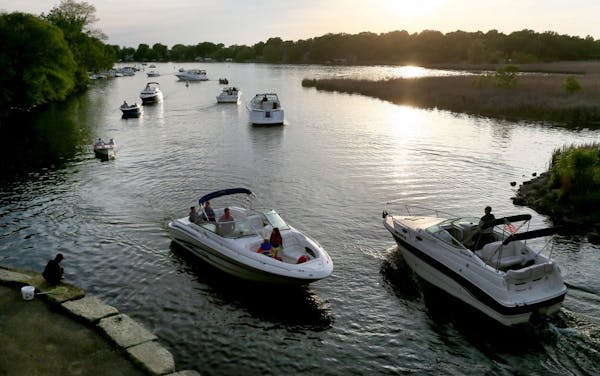This summer, workers will seed native plants along the eroding shoreline of Lake Nokomis, now that the Minneapolis Park and Recreation Board has permits to move forward with the $444,000 restoration.
The project, part of a master plan adopted in 2015, aims to restore natural habitat by replacing mowed grasses along the edge of the north and east sides of the lake.
Park Board officials hoped to begin replanting last year, but reviews from the Minnesota State Historic Preservation Office and the U.S. Army Corps of Engineers were not completed until this year, said project manager Jon Duesman.
Funded by a grant from the state's Outdoor Heritage Fund, the project is now out for bid, and Duesman hopes the restoration work will begin around mid-June.
The shoreline project is adjacent to a paved walking trail, the Lake Nokomis Community Center and the Nokomis Naturescape Garden, a native plant garden installed in 1998. In all, the Park Board hopes to restore about 4,800 linear feet of shoreline, Duesman said.
"It's really coming in and replanting this entire stretch," he said.
Workers will plant a mix of native seeds that will grow from the lake's edge up to 4 feet from the walking trail.
The taller plants will filter out stormwater runoff as it enters the lake, improving the water and habitat quality, Duesman said. They will be low enough that they won't impair people's views, he added.
The natural vegetation will also restrict where park visitors can walk up to the lake edge to sit, fish or launch their kayaks. The Park Board will designate areas where people can reach the shore.
The restoration work will also include regrading eroded shore banks, Duesman said.
"Those waves just kind of constantly beat along the shoreline year after year after year," he said. "It was just really causing these kind of erodible areas."
Marked trees on the shoreline will be removed or pruned down to 15 feet in order for more sunlight to reach new plants and allow more dominant trees to grow better, according to the Park Board.
In its review of the project, the Historic Preservation Office found that the restoration would not have a negative impact on the historic district that encompasses the lake. The corps also supported the project's efforts to stabilize the shore banks.
Construction will be finished this fall, Duesman said.

Minneapolis schools, teachers reach tentative agreement to avert strike
Men knock woman down and steal her dog during walk, St. Paul police say

Minneapolis reaches $150k settlement with eyewitness of George Floyd's murder
He grew up legally in Minnesota, but immigration law gap may one day force student to leave

